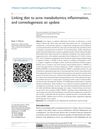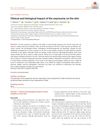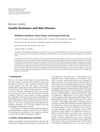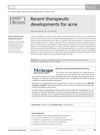Skin Expression of Mammalian Target of Rapamycin and Forkhead Box Transcription Factor O1, and Serum Insulin-Like Growth Factor-1 in Patients with Acne Vulgaris and Their Relationship with Diet
January 2016
in “
British Journal of Dermatology
”
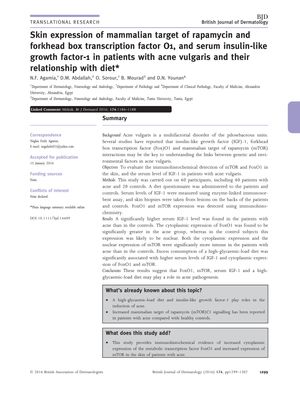
TLDR Eating a high-glycemic diet may worsen acne by increasing certain protein levels and expressions in the skin.
The study examined 40 patients with acne vulgaris and 20 control subjects to explore the connection between diet and acne development, focusing on skin expression of mTOR and FoxO1, and serum IGF-1 levels. The findings indicated that patients with acne had significantly higher serum IGF-1 levels and increased cytoplasmic expression of FoxO1 and mTOR compared to controls. A high-glycaemic-load diet was also associated with these elevated levels and expressions. While no significant difference in milk and dairy product consumption was found between the groups, the study suggests that high serum IGF-1 levels and high-glycaemic-load diets could contribute to acne severity by affecting FoxO1 and mTOR expression. The study recommends dietary interventions to normalize calorie intake, lower glycaemic load, and restrict dairy protein consumption as potential acne treatments and calls for further research with more participants to evaluate the impact of diet on IGF-1 levels and FoxO1 expression in acne patients.

